The goals were to combine the knowledge and processes Hearthstone had learned through their research with an easy to use interface for caregivers. The app offered specialized activities like games and quizzes, plus education for the caregivers and features for planning out their day.
Design Focus
The challenge of building an application whose goals included active use by people with dementia was unique and challenging for us. This was our first chance to expand upon our basic efforts at improving accessibility and making our sites and applications usable by as many people as possible.
While we’re familiar with WCAG guidelines, ARIA tags, and tools like contrast checker, we’re not experts on working with people with dementia and alzheimers. Fortunately, the team from Hearthstone is and proved to be invaluable resources in guiding our design efforts.
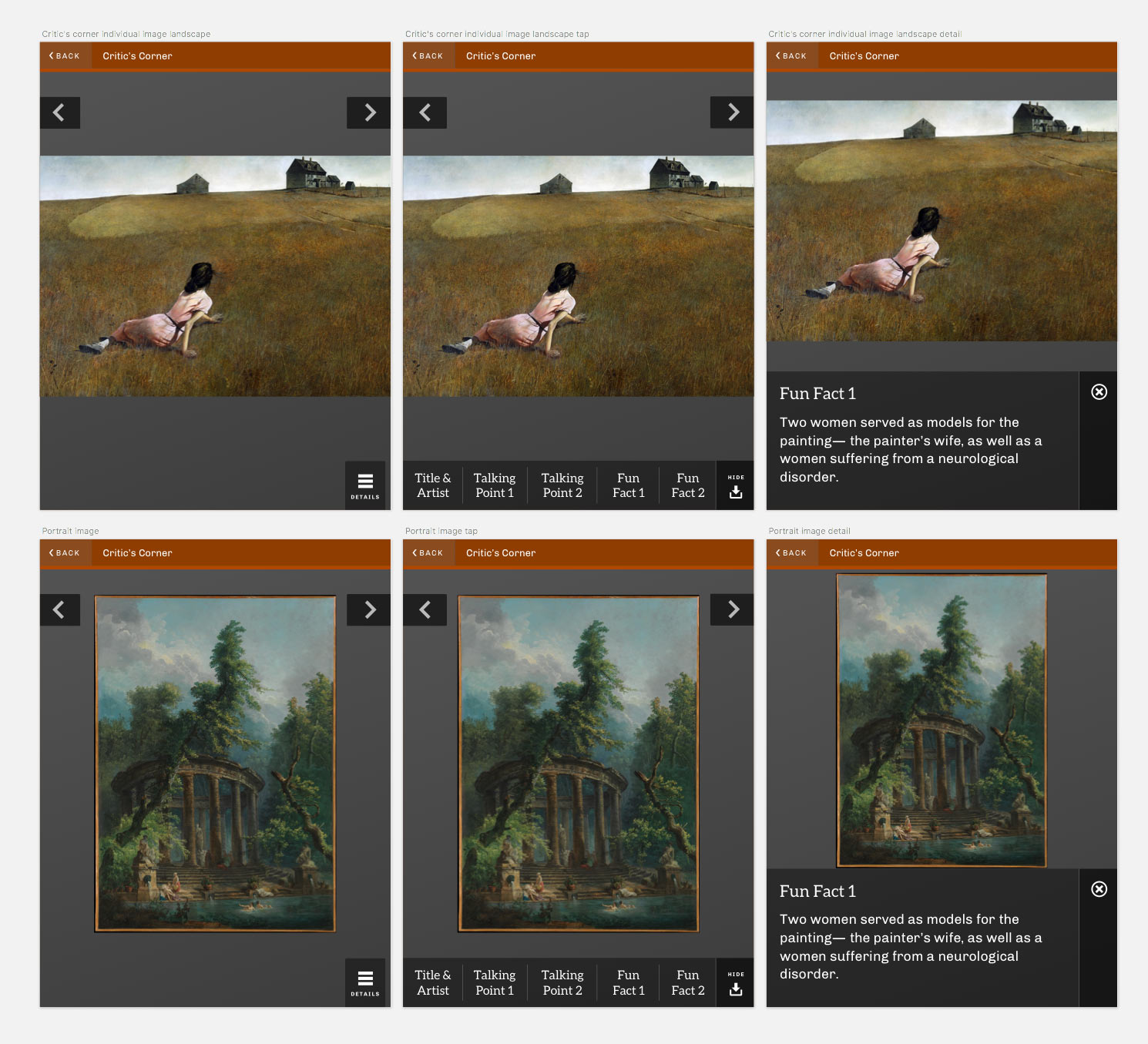
Initial Direction
We started out the project the way we always do; with discussions and research. We wanted to employ an aesthetic and tone that was simple and modern, but also inviting for users (many of whom may not be tech savvy). We looked to other products in the same industry space, as well as well-designed pieces from elsewhere in medical fields, caregiving, and personal planning for inspiration.

We drew upon that research to present several iterations of element collages to the Hearthstone team. One of our favorite deliverables, element collages are a way to explore how an application might look without getting caught up in implementation details or worrying about content.
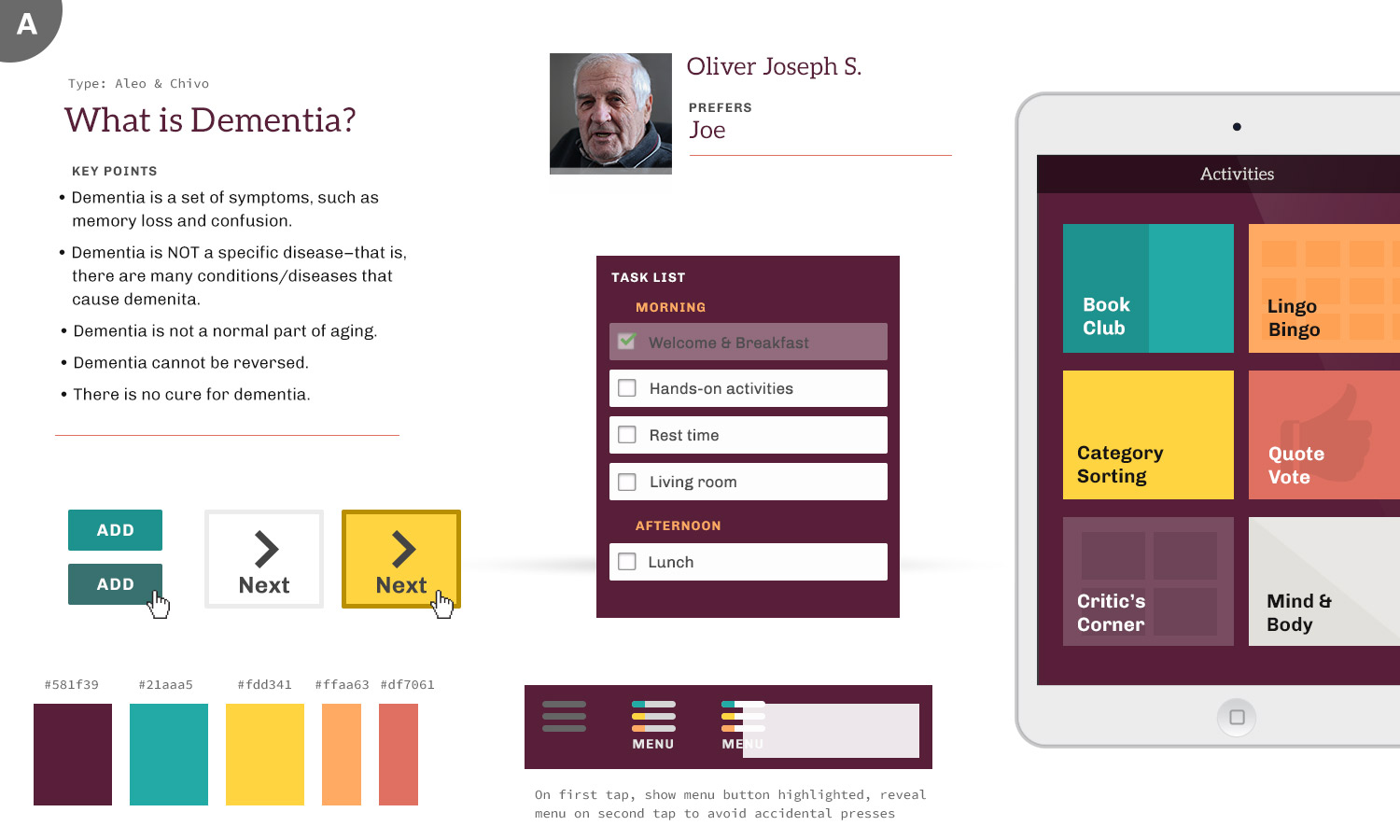
Intentional Design
Included in our element collage documents is an entire page dedicated to the rationale and accessibility concerns of different design decisions we were suggesting. While there’s certainly subjective aspects to any design, we strongly feel that the best designs are not just visually appealing and on-brand, but are formed from well-researched and thoughtful decisions, backed up with solid rationale. To that end, we think that forcing ourselves to explain ourselves early on in the process is a tough but necessary step. We also test color combinations for recommended WCAG contrast and present the findings.
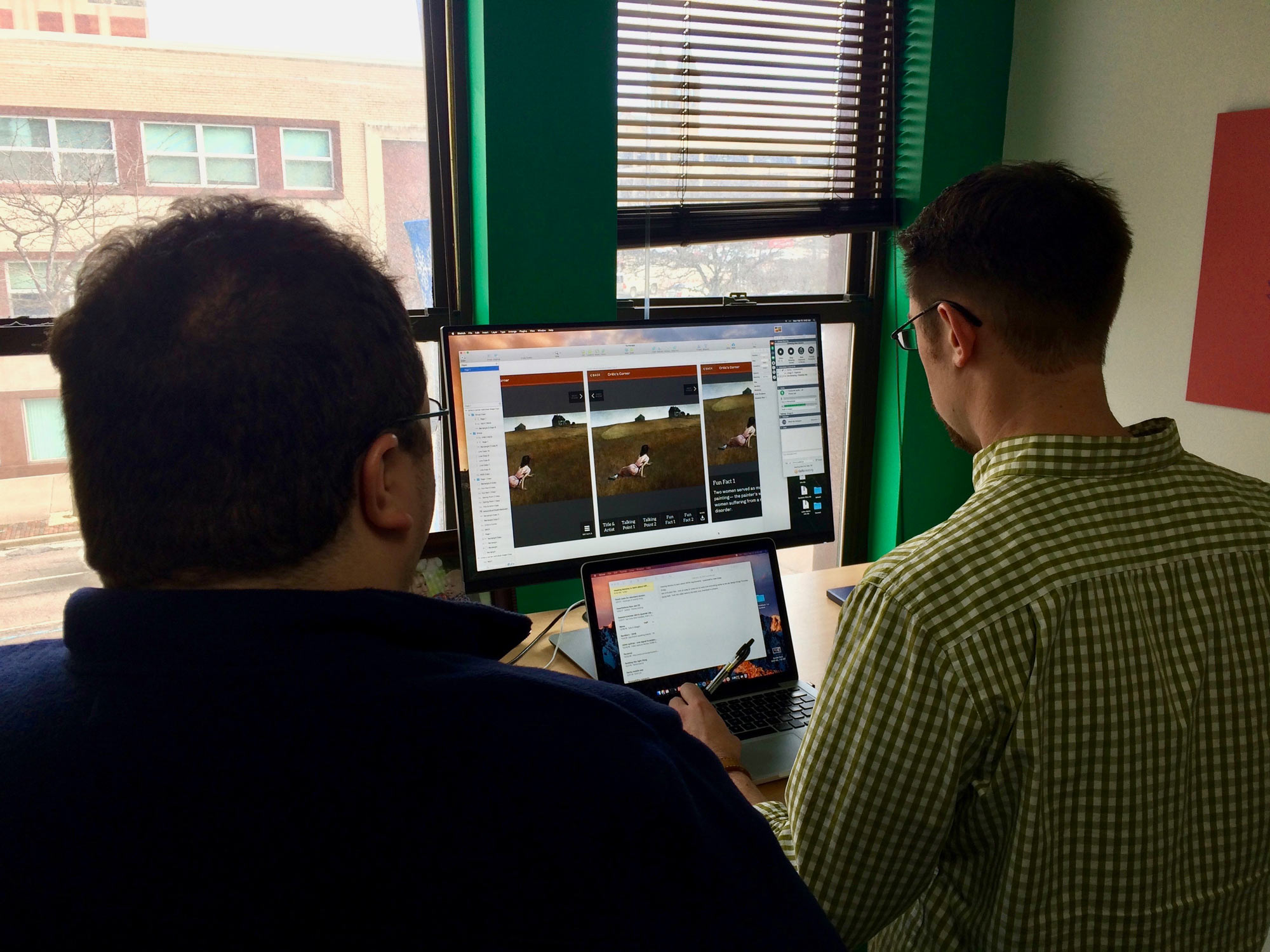
Moving Forward
After some iterations through our initial designs, we quickly moved into applying these choices (colors, type, layout options) to some realistic content. We started out with a photo grid treatment for the home screen of the app – filling the screen with large touchable areas made sense and seemed like an elegant way to utilize what was essentially just 4 main options. We could update the layout based on screen orientation, and it would scale easily. When we talked through this with the Hearthstone team, we learned some valuable lessons.
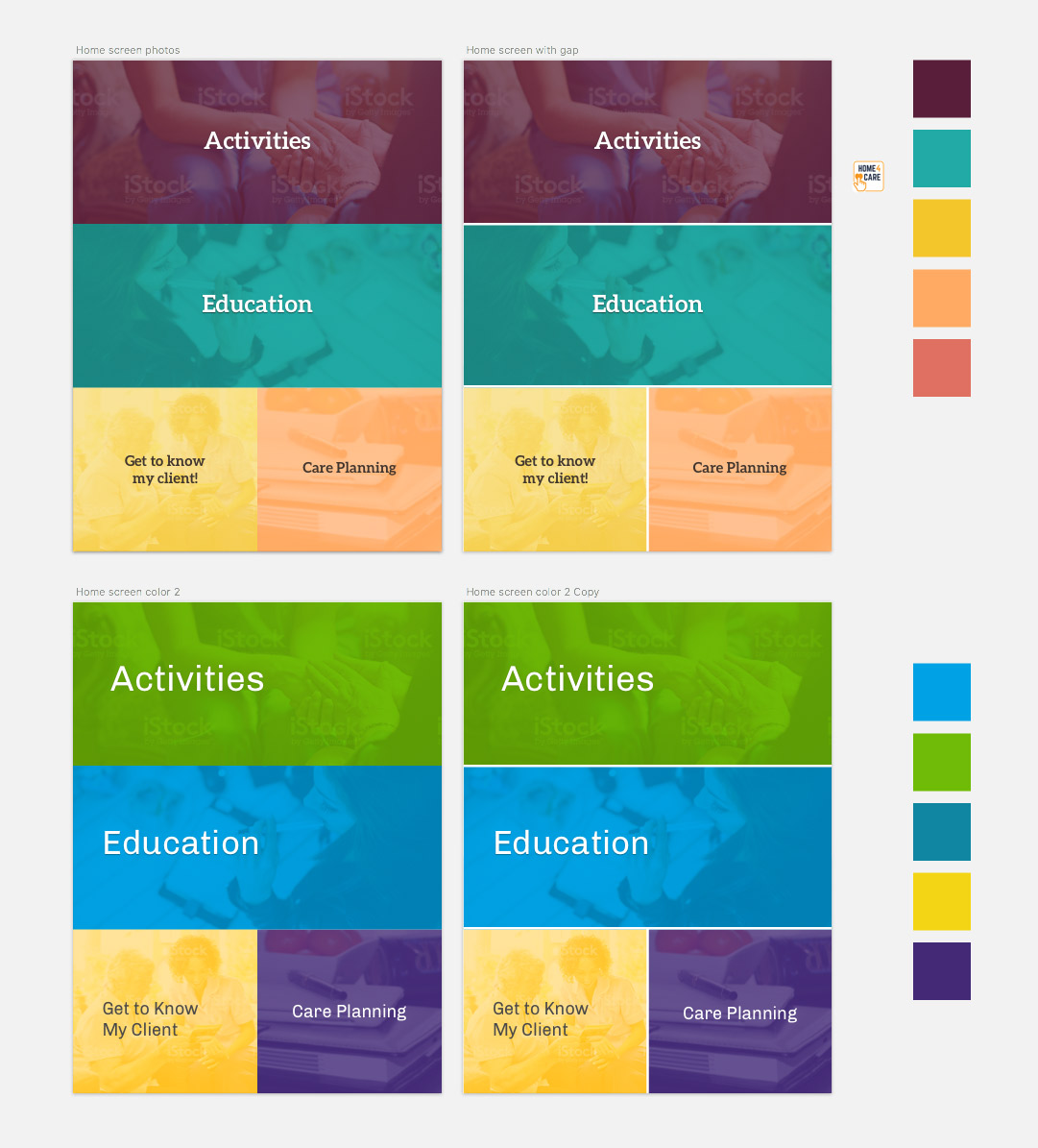
To potential users, large touchable areas probably wouldn’t be obvious as points of interaction. Furthermore, while we took the idea of stock-style photography as a nice way to create visual interest, it was brought up that users might take the imagery too literally, or be confused by the people and activities pictured.
Armed with a better understanding, we adjusted the starting screen to use four large, obvious buttons. Those conversations helped guide our decisions throughout the project.
Into the Details
As we designed and built the application, we found ourselves looking at some details more closely than we expected. We started the project using Aleo for headlines and button choices. It’s clean and legible, but being a mild slab serif gives it a little bit of personality which we thought helped the app feel more welcoming. Even though the serifs are fairly straightforward, the feedback was that certain users might struggle to quickly read the letters in some contexts. We transitioned to Rubik, a very simple sans-serif to be as clear as possible.
We also examined the usage of ligatures. Ligatures are the connecting glyphs between certain characters in a typeface.
They come from traditional typesetting; benefiting printing by simplifying the physical blocks that were required for frequent letter combinations. They remain in many digital forms as a nod to heritage, and give materials a traditional, stately look. We don’t usually give them second thought, but with clarity as our primary goal we chose to use font-variant-ligature in CSS to disable them, giving us a plainer, but from some studies measurably easier to read design.
Building a Design System
The actual nuts and bolts of designing different pieces for the application are where we leverage Atomic Design or similar systems. The goal is to create reusable elements that serve as building blocks for most common views and features of an application. Having such a pattern library established allowed us to build new things with consistency and speeds up development time greatly.
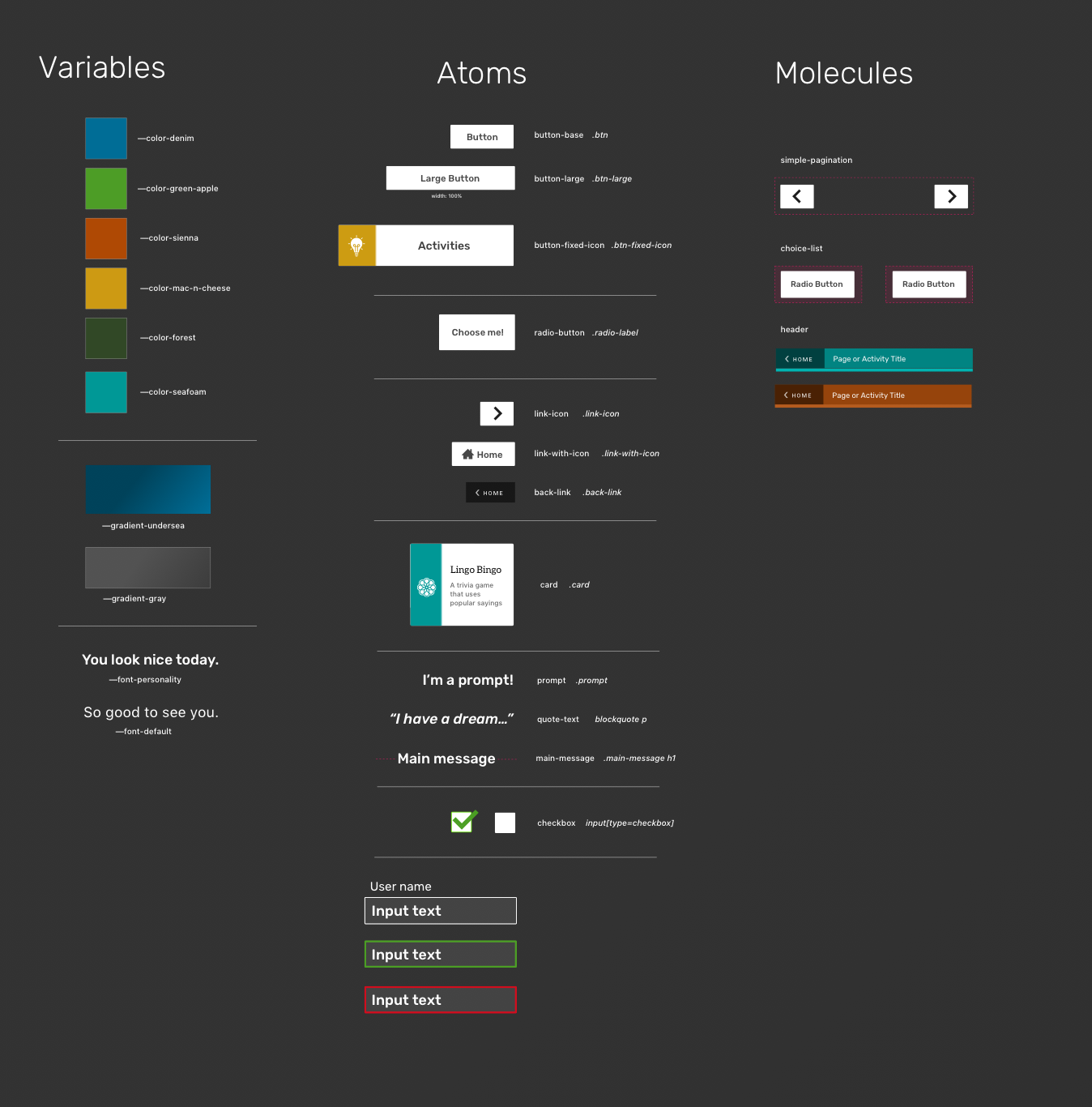
We had a lot of fun working with the talented team at Hearthstone Alzheimer Care on this project and hope this peek behind the scenes will help you think a bit differently on your own projects.
If you’re interested in some help along the way, we’re always interested in speaking to new clients. You can contact us at info@coffeeandcode.com.
]]>A similar library on the Ruby side of the fence is called guard, which listens for file events and runs commands in response. I’ve used guard in previous projects, but I try not to pull in dependencies from other programming languages if possible in projects. Also, guard represents something that I’m trying to minimize in my development process which I’ll call a “wrapper application”.
“Wrapper Application”
I’m not sure if there’s a better word for it, but I’m going to talk about “wrapper applications”, or a library that wraps the core functionality that I’m trying to work with. In this case, it’s calling a command in response to a file system change. To get to the library that is actually doing the watching, guard pulls in listen, which pulls in rb-fsevent who does the actual monitoring.
If rb-fsevent makes a breaking change (or fixes a bug, or adds new functionality) I will have to wait for the listen library and the guard library to add the new functionality. I’ve been burnt many times before (I’m looking at you Grunt and Gulp plugins) so I try to minimize wrappers whenever possible. The fewer moving parts, the better.
All of that said, composition of libraries is not a bad thing, just something I like to look out for. Now, back to the story.
Enter the Watchman
When trying to find applications that could fit my need without being a “wrapper”, I ran into two other brew installable apps called fswatch and fsevent_watch, but their cryptic usage instructions and command line arguments led me to find Facebook’s Watchman. It’s open source, been out for a few years, and seemed to be able to meet my needs without requiring a “wrapper” library. In addition, it seemed to be pretty robust.
Installing is pretty straight forward thanks to brew install watchman and the introduction on their website looked straight-forward, but then things went downhill quickly.
The documentation doesn’t give many example setups, so it took a few read throughs before I found how to watch files and trigger commands in response. Unfortunately,
running the test task isn’t very helpful if you never see its output.
Turns out that normally triggered tasks send their output to the watchman log file that’s conveniently buried deep on your system’s bowels. Since I didn’t want to tail a file, I kept poking around in the documentation till I found the watchman-make command. It’s a convenience command that invokes a build tool in response to file changes while sending command output to your terminal. It met my needs and didn’t require any complicated setup of triggers or watchers.
While digging through documentation I also found that watch-project is preferred to the deprecated watch command so that overlapping watch commands can use a common process to be easier on the operating system.
That brings the command needed for my project to:
# Run this command to monitor PHP files and run phpunit in response.
watchman-make -p 'src/**/*.php' 'tests/**/*.php' --make=vendor/bin/phpunit -t tests
It was a bit of a journey to get everything working properly the first time, so hopefully this information will be helpful to others looking for a similar setup.
]]>